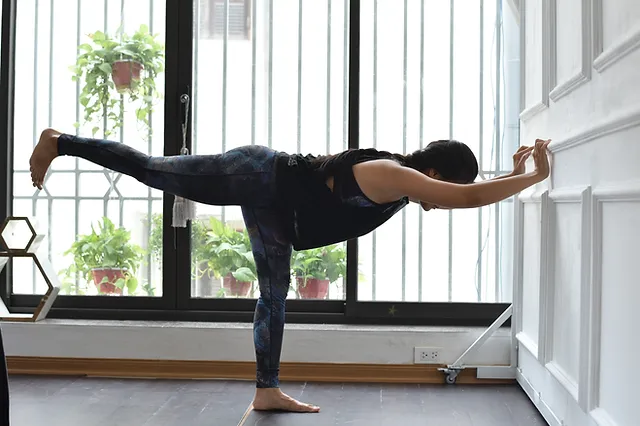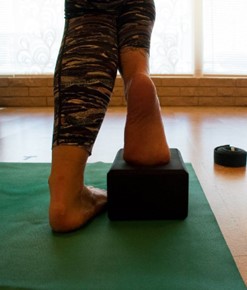AGELESS OR AGE LESS???
- suma644
- Jan 22, 2023
- 6 min read
Updated: Dec 11, 2023
I know I know – this is a topic we are not comfortable with. Aging??? Really?
Yes, really. For eons, humans have been exploring a sure-fire way to stop the aging process, or in some cases to prolong life expectancy.
But..let’s stop and think for a moment. What’s the point of living longer if we are not healthy enough to enjoy that life?
What is healthy or vibrant aging? And why do we want to invest in this concept?
Aging is a natural phenomenon and happens to every living thing. It is the process of gradual deterioration of a living organism. It is bound to happen eventually to all of us.
In order to age well and in good health, there are several proactive steps we can take before it is too late. And one of them is the practice of yoga.
In our teens we want to act older. In our twenties we feel invincible
In our thirties we begin to feel like adults
And in our forties, it suddenly hits us that there are some changes that are happening in our bodies and minds that, at time, may be baffling.
And this continues into our fifties, sixties and so on
So how do we get a handle on this slippery slope of aging? And how can yoga lend a stabilizing hand?
As I am getting older, I want to focus more on how yoga can help people like me to age well and strong. So I did a teacher’s training in “Yoga for Healthy Aging” with Dr. Baxter Bell, a medical doctor and a senior yoga teacher. I loved it and it put a new perspective on my teaching self. I want to use this knowledge, combined with my 3 decades of teaching experience and reach out to people who need this the most. So, let’s delve into what aging is and the role of yoga in handling this process.
There are two main apprehensions with aging – morbidity and loss of independence.
mor·bid·i·ty
/môrˈbidədē/
noun
MEDICINE
the condition of suffering from a disease or medical condition.
"the therapy can substantially reduce respiratory morbidity in infants"
o the rate of disease in a population.
"the levels of air pollution are associated with increased morbidity from respiratory diseases"
So, in a nutshell morbidity is the time we spend being ill. We are all familiar with the concept of life span – the number of years we live. But is what is health span and why should we pay more attention to this than life span?
Life span – morbidity = health span
Independence
I don’t think we need to go to the dictionary to understand what independence means – it is our ability not to depend on others for our day-to-day functionality. This need for dependency can happen at any age but it is more relevant as we age more and even more relevant if we are ill at any age.
Now let’s talk about how yoga can help us navigate these risk factors. There are four main areas that help us age well – flexibility, strength, balance, and agility. All these impact our body systems such as cardiovascular, bone, endocrine, nervous and brain health. Let’s look at each of these and see how yoga comes into picture.
Flexibility

Simply put, we need flexibility to move through our day. The simple act of raising a hand or moving it to the side requires flexibility.
Yoga helps us improve our range of motion (ability of or movement around a joint), which is critical for normal functionality.
Flexibility makes our muscles get longer, more supple and active. When the range of motion is compromised, we feel stiff and this leads to aches and pains in that area.
Yoga can help us work on improving our flexibility in a gentle yet effective way. Thanks to the yoga guru, Sri B.K.S. Iyengar, we also have the capability of using yoga props such as blocks, chair, wall and strap to help us get deeper flexibility in a safe and efficient way.
Some common and well-known yoga poses to increase flexibility are standing forward bend, triangle, lunge, twists etc.
Strength

We all know how important being strong is. I personally feel that I am much stronger now in my 60’s than I was in my 30’s.
The simple act of lifting your carry-on bag to keep it in the overhead compartment should not be a struggle at any age. But I see it all the time – women, more than men, struggle to accomplish this task.
We need strong shoulders to lift things, strong legs to carry us through the day, and a strong core to keep our hips, knees and back healthy.
Can yoga make us strong? You bet. I see the transformation in front of my own eyes – my student, who was not able to bring her legs up (needs core strength) a couple of years ago, now holds plank with ease. How rewarding she must be feeling!!
We need strong muscles to protect our joints – many problems occur when joints take on more weight than they should. When muscles are strong joints ease up
When we don’t use the muscles, they become atrophied – another word for this is sarcopenia. Yoga helps us use our muscles in most poses.
Yoga not only helps with muscle strength but also with endurance. When we hold a pose for a minute, the muscles are lengthened, toned and strengthened.
Yoga poses target leg and hip strength, arm and shoulder strength, core strength and back and spinal strength.
Balance

How do we keep up our balance and what happens if we cannot or do not?
This is a picture of myself and my mother – me in my 60’s and my mother in her 90’s.
We both have good balance that came with years of practicing yoga and being confident about our ability to transition from one pose to the other.
Our vestibular (inner ear), sensory, visual, and touch help us with our proprioception (our body’s ability to sense the movement, action and location)
When we are coordinated and synchronized, we move with confidence and avoid the pitfalls of falling.
As we get older our ability to respond quickly also becomes a bit challenging.
It is extremely critical to avoid falls, so we can live fracture free lives
Yoga can definitely help us achieve this goal, as long as we keep practicing on a regular basis
Balance also requires core strength, so the other tenet of healthy aging comes in handy.
Yoga offers several balance poses – and these can be done at any age and with any physical limitations by utilizing props such as blocks, chairs, or a wall.
Balance not only helps us with physical alignment but also with mental focus. This mind aspect in turn helps us calm down and get relief from stress.
Agility

And the last tenet of healthy aging I am going to talk about is agility. Agility is the ability to move from one position to another while staying in balance and in control.
For example if you are sitting down and want to get up, you should be able to do so with ease and not fumble. Similarly moving through a crowded airport without hitting anyone or anything also requires agility.
The other three pillars of healthy aging – flexibility, strength and balance will play a strong role in helping us with being agile.
Our sensory system plays a key role as well. Therefore, yoga works inside out to keep us agile.
Yoga can help us get agile by practicing dynamic and flow sequences. In a flow, be it gentle or not so gentle, we move from one yoga posture to another, and this movement teaches us to be agile. When we are doing a flow sequence we also need to focus and be mindful of our movements
You can see this from this picture how moving from one pose to another requires us to pay attention.
In real life this skill will translate into safe transitioning from sitting to standing, walking or running to staying still etc.
Now that we have covered the basic skills required to age gracefully, safely and with vibrance – would you consider yoga to be part of your daily regimen?
I just started a series of classes based on this theme and you can join any time since we will be repeating the sequences to cover flexibility, strength, balance and agility. Here is the link for you to register. Make sure you are signing up for the Friday virtual yoga class










Comments